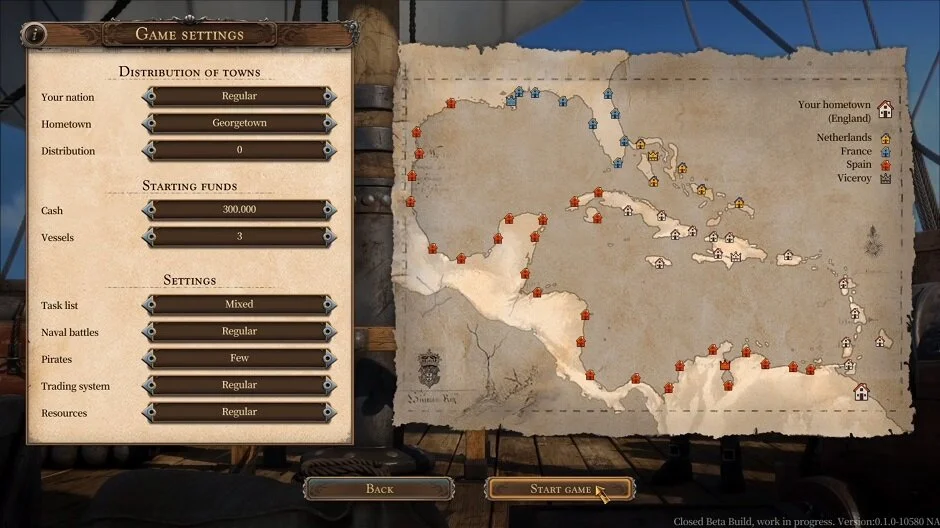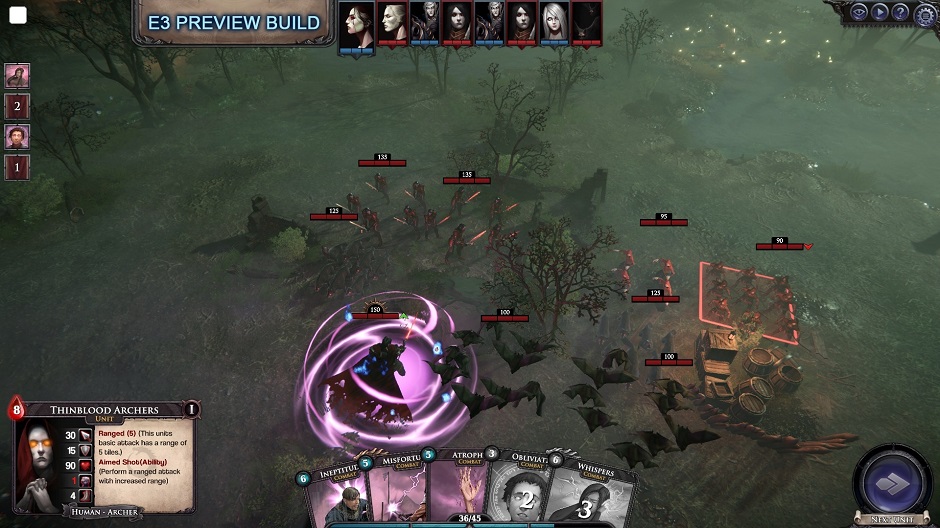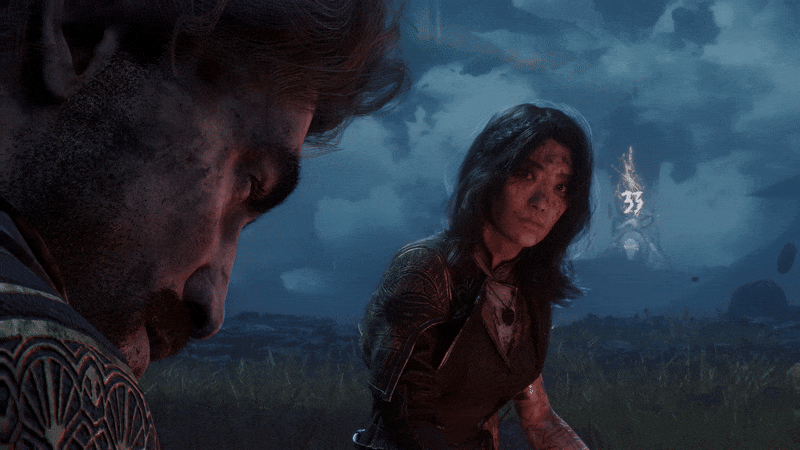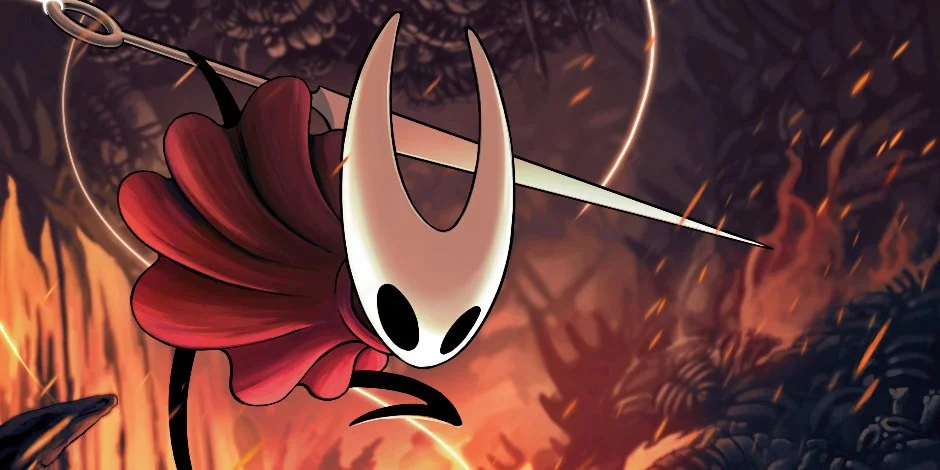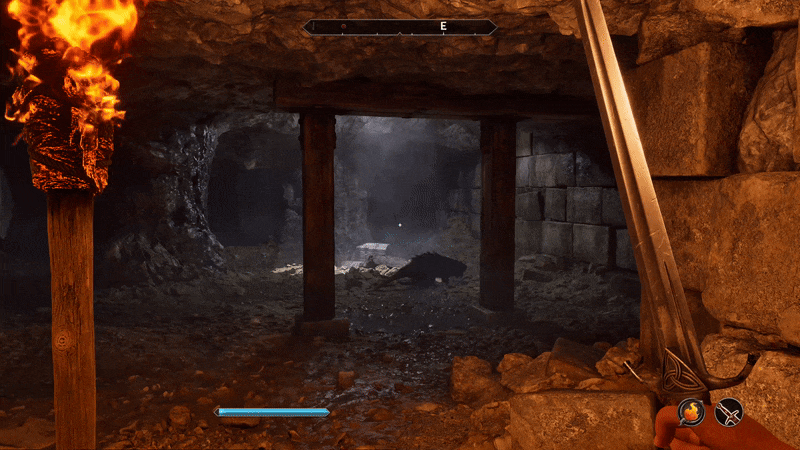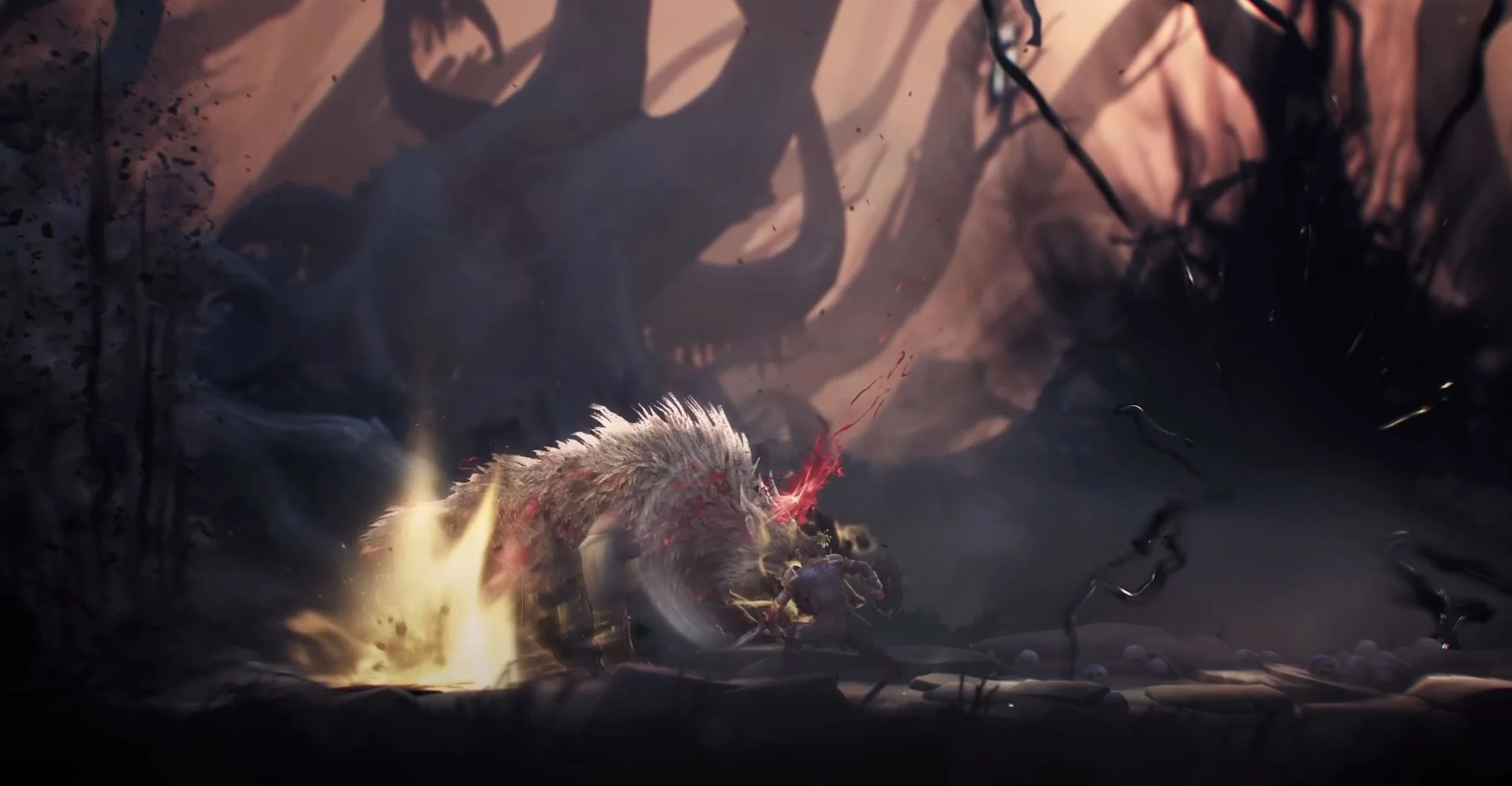This past week I had the opportunity to see a hands-on demo for the upcoming release of Port Royale 4 being published by Kalypso Media and developed by Gaming Minds. For those of you out there who might be unfamiliar with the franchise, Port Royale is an economic/ trading and city builder style game that also employs forms of naval combat set in the 16th/17th-century Caribbean. The last entry in the franchise came from the 2012 release of Port Royale 3 on PC, Xbox 360, and PlayStation 3. So needless to say it more than time for the franchise to get another sequel! My demo was carried out by Daniel Dumont who is Creative Director at Gaming Minds.
Getting started
Daniel carried out this demo on Freemode which is the main gameplay mode of Port Royale 4. By main, it is the mode most players are likely to spend the most time with. The game features 4 playable nations which include England, France, Spain, and the Netherlands, Each nation has distinct special attributes that are displayed on the select screen as well as special ships unique to each. To get a better understanding of how each nation plays, a campaign is available that will take roughly 20 hours to complete and a number of additional tutorials!
Once your nation is selected, you will then choose a character to play from 4 different classes. Each class has 2 positive unique abilities offset by one negative ability. The Adventurer is able to start a game with 2 ship captains and the ability to re-build ships lost in battles but comes at the cost of being weaker in boarding fights. The Merchant can do trade with other nations even during wartime and can conduct trade without first buying a license but it comes at the cost of needed double the number of fame points to build combat vessels.
The Buccaneer gets a quicker start at the beginning of a game with 5 instant fame points and a steep discount on Letters of Marque but if you conduct any piracy expect to pay a heavy price. If piracy is a style of play you might employ, The Piratess will not get attacked by other pirates and lose less fame for conducting such acts but it does come at the price of buildings costing more. Each character will have a selectable flag and can be renamed.
Can I live here?
The game map consists of the entire Caribbean and includes Florida, the Gulf of Mexico, Mexico and northern South America. Each of the four nations has a distribution of towns scattered across the map with 60 in total between them for this demo. A number of settings are available to let you change up how your game will play with the ability to make it easier or harder and to change when random events will happen. This screen also lets you set your hometown where you will be based. Each nation also has a viceroy who you will serve under and do missions for.
I was blown away by how large the map is. Even when zoomed out you will be doing a good amount of scrolling to see the whole thing. Sure it is the whole Caribbean Sea, but even an area that large doesn’t always equal a larger map in a game. The map itself is fully 3D and it looks great with some nice water effects and underwater details. You can clearly see shallow and deeper water and the surface reflections of sunlight off the waves look stunning. By default, you can only see your towns and convoys but for presentation purposes, all are visible here.
Things get even more detailed once you zoom in allowing you to appreciate all the small details in the way a town is laid out. The water effects and details also look great upon closer inspection and the details given to underwater formations can’t be appreciated enough! Then there is the lighting and it looks stunning to see shadows stretch out from the trees and buildings as dusk begins to fall on the land. Seeing the dusk light reflecting off the ocean was another stunning sight I will never get enough of in gaming. Zooming in and out also controls the game speed so being on the world view will make time pass faster than zoomed into a city.
It is a living world!
Everything in the world is fully simulated with every town, convoy, and pirate ship having a distinct purpose. There are a few random events that will occur during typical gameplay including storms and special missions. Trading is a huge part of Port Royale 4’s gameplay loop and is the main method for making money. Each town has a specialization in what it can produce based on its area and it is up to players to decide if they will take advantage of that to drive their economies. Only 7 goods can be made in each town out of a possible 25 so maximizing the potential for each is going to be key. Constructing production facilities is also very strategic in where they can be placed. Placing a rum distillery next to a sugar plantation, for example, will result in better production of Rum since it is by the source material.
After goods are produced, trading of said goods can be conducted. I am a fan of what Gaming Minds has done with the trading system. If a player so chooses, the entire economy and trading system can be done automatically resulting in very minimal micro-management if so chosen. If you want to be in fine control of pricing, trade routes, and amounts to trade you can do that too! Customizing trade routes is pretty nuts, available overlays for the map can show current wind conditions, storms, shallow and deep waters. You can then plot the routes your ships can take and if multiple stops will be included along the way. Just remember that you will need to buy a trade license for the town you want to trade with. This really opens up a number of possibilities and makes the whole system more approachable for newer players of this style of game.
Hey, those are my goods!
Of course, this is the 16th century Caribbean which means that piracy is in its heyday and an unprotected convoy is likely to be attacked at some point during play. Combat ships can be assigned to convoys in order to protect them. To construct the bigger combat vessels you will need to have approval from your viceroy using concessions that you can buy with fame points for doing missions and taking out pirates, so you better not ignore missions! Each convoy that has battleships will also need a captain to command them. Captains will earn experience through working for you which in turn will unlock skills for the captain as they level up.
For the combat system, Port Royale 4 employs a form of turn-based tactical fighting. Each ship in the engagement has a set number of movement and turning points per turn and the number of combat actions depends on the ship’s armament. A ship with cannons along each side will be able to use both if in a position to do so. There are different sets of shots that can be used in an attack that deal specific damage to either the enemy ship (cannonball) or its crew (grapeshot). Boarding can also be done if you wish to capture an enemy vessel. A number of special tactics can also be employed to help steer a battle in your favor and these can be unlocked during play. In our demo, Daniel showcased blocking off a movement space by setting the sea ablaze! Like trading, combat can be fully simulated for players who might be less interested in that aspect of gameplay.
All in all, Port Royale 4 might seem like a pretty complicated game on the surface but the team at Gaming Minds has done a lot to make the game approachable. More complicated aspects of play can be fully simulated allowing players to focus on other aspects they might be better at. The number of menus also isn’t overwhelming and each has a clear cut purpose. Combine this approachability with some stunning visuals and it is the recipe for a game I can see gamers sinking hundreds of hours into! Port Royale 4 is set to launch on PC, PS4, Xbox One and Nintendo Switch in Q3 2020 so keep an eye out here on GT for more coverage to come! Thanks again to Daniel and Kalypso Media for taking the time with us to show off Port Royale 4.





